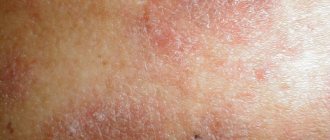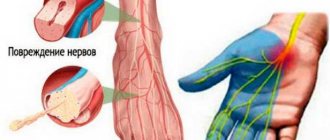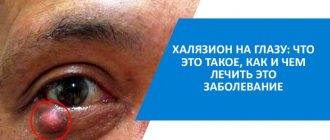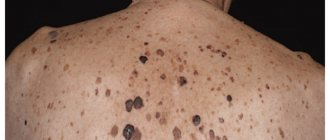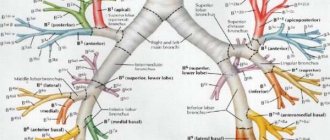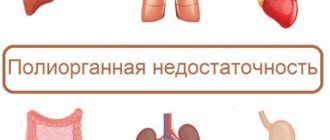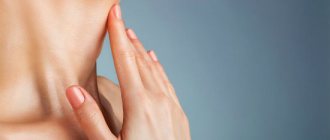Trypophobia - what is it in humans? The answer to the question is known to a limited number of people, since this term was proposed relatively recently (in 2004). Most often, the mentioned concept refers to the fear of a large number of holes in organic objects (for example, bubbles in dough, abscesses on the skin, etc.). Fear is formed at the genetic level, because in the past, due to excessive fear of everything unknown, the ancestors of Homo sapiens managed to survive, evolve, and become the dominant species on the planet.
Causes of phobia
Why and how trypophobia appears is still unknown. However, scientific research has revealed that there is a special section in the human brain that is responsible for producing emotions when seeing a cluster of holes. In a small group of people (approximately 10-20% of the total) it is much more developed, resulting in a kind of defensive reaction.
There is another theory why the fear of holes and holes in the body appeared. It is initially present in all primates, alerting them to serious illnesses and the need for treatment. For example, numerous skin abscesses signal to the monkey's brain about infection with larvae under the epithelial covers. Some people have also inherited this ability, as a result of which trypophobia is not considered a serious psychophysical disorder.
What is a trypophobe afraid of?
At the moment of an attack of fear, the perception of a frightened person is distorted (fear has large eyes). The brain draws in something that is not there, which further screws up the trypophobe.
A person, in fact, understands the irrationality of his fear (how can ordinary holes be dangerous?), but he cannot help himself, he loses control over his emotions.
Psychologists asked about the sensations and feelings of those who suffer from this disorder. All answers can be divided into three large groups:
- some associated the holes with an abyss into which one could fall.
- Others fantasized that these holes were inhabited by certain creatures capable of causing harm.
- The third group reported great disgust.
Those suffering from fear of many holes can be alarmed by a variety of objects - living and inanimate:
- pores on human skin;
- texture of various plants (holes on leaves, tree trunks, etc.)
- meat structure;
- corals;
- lather;
- moss;
- repeating pattern, for example, on the fur of a leopard;
- kitchen utensils – sieve, colander;
- porous surfaces (baked goods, chocolate, cheese);
- porous stones, etc.
Fear can manifest itself even when looking at holes in a photo: trypophobia is illogical, so a person doesn’t care whether the holes are drawn or present in reality.
Symptoms of the disease
Trypophobia, the symptoms of which are not fully understood, is one of the youngest phobias, and many authoritative experts still refuse to include it in the list of diseases. An individual susceptible to the disease in question most often experiences the following conditions:
- outbursts of fear or panic attacks;
- prolonged feeling of anxiety;
- cardiopalmus;
- severe dizziness;
- increased sweating;
- nervousness.
Trypophobia in people can be accompanied by more serious health consequences. If in the early stages of the disease the patient experiences severe anxiety with all the attendant physiological symptoms, then as the disease progresses, itching, redness of the skin, muscle spasms or convulsions are added. In its extreme form, the disease leads to loss of consciousness, difficulty breathing, loss of coordination and psychological abnormalities (depression, withdrawal, reluctance to go outside). The signs of trypophobia can vary significantly, so only an experienced specialist can make an accurate diagnosis.
Existing therapies
Most psychiatrists are skeptical about trypophobia, but the disorder in question must be treated without fail. If you do not pay attention to the patient’s psycho-emotional balance, you can expect unpleasant consequences.
With annual research, methods of treating trypophobia are being improved, for which certain medications and psychotherapeutic methods are used. The following medications are generally prescribed for people suffering from fear of recurring holes:
- Sedatives . The choice of medications depends on the form of panic attacks. These may be herbal medicines or barbiturates and strong tranquilizers.
- Anti-inflammatory drugs . These products reduce skin irritation, the intensity of inflammatory processes and swelling.
- Antihistamines . Allergy tablets eliminate redness, itching and burning. Some of these medications have a mild sedative effect.
All of these drugs reduce the severity of symptoms that are characteristic of panic attacks. When the stimulus is absent, the patient can again live a full life. However, to completely get rid of the disorder, potent medications will only help in combination with psychological methods.
Types of disease
Since the described illness was introduced into medical practice relatively recently, trypophobia, the varieties of which do not have a generally accepted classification, is still being studied. As a rule, doctors distinguish such types of disease as:
- mild form (when the individual experiences nervousness, anxiety);
- medium form (characteristic symptoms are nausea, itching, trembling);
- severe form (the patient complains of panic attacks, dizziness, vomiting).
Phobia of cluster holes in the body or surrounding objects is considered a serious obstacle to normal human life. It often causes misunderstandings, ridicule, and outright hostility on the part of work colleagues, friends, or strangers. No matter how incomprehensible this disease may seem, people with this disease should be treated with respect
Characteristic manifestations
Fear, a panic attack occurs at the sight of small holes located close to each other
Feelings of intense fear can be caused by objects that have small holes located at close distances from each other. More often than others, fear is caused by:
- honeycomb;
- sparkling water;
- passages of larvae, worms;
- depression in plants in places where seeds should be (corn, sunflower);
- enlarged pores on people's skin;
- food products that have porosity (sausage, cheese, bread, porous chocolate);
- natural phenomena, for example, bubbles formed in puddles when it rains.
Trypophobia, like any other type of fear, is characterized by manifestations associated with panic attacks and physiological changes in the body that occur in response to contact with the object of one’s fear. It is not necessary that you will have all the signs listed below, but at least two or three options will definitely occur. Characteristic manifestations include:
- headache;
- cardiopalmus;
- the occurrence of nausea or even vomiting;
- increased nervous excitability;
- panicked scream;
- increased anxiety;
- possible dermatitis, skin itching;
- hand tremors, body tremors;
- difficulty breathing, lack of air;
- allergic reaction;
- increased sweating;
- skin hyperemia;
- sensation of goosebumps moving throughout the body.
It is important to understand that any bullying of a person with trypophobia, in particular the deliberate display of pictures with holes that frighten him, can cause serious neurosis, leading to a change in consciousness. The consequences of such jokes can lead to the placement of a person with a phobia in a specialized institution.
Trypophobia - a disease or a myth?
Trypophobia, the causes of which are a mystery to researchers, is not recognized by the American Psychiatric Association, as a result of which you will never be given such a diagnosis in the United States. Some scientists argue that the phobia of holes in the human body is based on biological disgust, and not on fear. In other words, defensive reactions are caused not by a special section in the brain, but by associative thinking, which paints a picture of possible troubles in the individual’s imagination. To some people, numerous holes seem disgusting and scary, while others do not feel discomfort at the sight of them. This allowed the researchers to conclude that trypophobia is not a disease, but is an unconscious reflex reaction.
In addition, there is now a persistent myth that scares many people: supposedly trypophobia is a disease that destroys parts of the body. Numerous pictures are circulating on the Internet showing the accumulation of numerous holes on a person’s skin, which literally decompose him. We hasten to reassure you: these scary photos are just photoshopped! Trypophobia is an exclusively PSYCHOLOGICAL disease; on human skin it does NOT manifest itself in the form of holes, at most - nervous itching, but nothing more.
Diagnostics
Diagnosis of a phobia is carried out by demonstrating various images of cluster holes
If you suspect you have trypophobia, consult a doctor, in particular a psychotherapist.
- In order to confirm the expected diagnosis, the specialist will first of all collect an anamnesis, find out what exactly is bothering you, how long ago the first symptoms appeared, and what causes them.
- The doctor will conduct a test to determine trypophobia by showing pictures of holes.
- A positive result will occur when an anxious state occurs after viewing more than one image.
- If the test result is positive, the doctor, after observing the patient’s reactions, will draw a conclusion about what degree of phobia exists. Further treatment will depend on this.
Treatment of the disease
What is trypophobia, photos and videos of which will be given below, each person has the right to decide for himself. However, unpleasant symptoms that can cause serious harm to health should be dealt with. Treatment of trypophobia usually includes a whole range of measures, including:
- psychoanalysis;
- inpatient therapy;
- group or individual psychotherapy sessions;
- taking medications (sedatives and antidepressants).
Methods of psychological rehabilitation aimed at acquiring self-control skills in stressful situations have proven themselves well. If you are literally paralyzed by fear, psychologists advise turning your gaze to other objects, concentrating on them, thinking about something pleasant, and then trying to get out of the state of stupor. Learning to manage your fears is the main goal of treatment.
Is it possible to heal yourself?
Unfortunately, only a few can cope with the disease on their own, because the disease occurs at the level of the subconscious, which many people are unable to control. As the main measures to help overcome trypophobia at home, it is worth noting first of all:
- meditation;
- relaxation;
- situational training.
It is important to prepare for attacks because they usually occur at the most inopportune times. Trypophobia often causes itching or redness on the human body, so it is necessary to carry antiallergic medications with you to reduce discomfort. In addition, you should always have clean water, ammonia or other means on hand that will help you quickly come to your senses in case of fainting.
Why is it dangerous?
Phobia is dangerous due to the possible aggravation of the condition, leading to mental disorder
Fortunately, this phobia is extremely rarely complicated by the development of a serious pathological condition. But in advanced situations, the following manifestations are still possible:
- extremely painful sudden muscle contraction;
- prolonged migraines;
- short-term loss of consciousness;
- increased muscle tone;
- changes in the body leading to loss of motor function.
Interesting Facts
In the process of diagnosing the disease, a method is used to demonstrate pictures that depict multiple holes on objects, plants, and the human body. The greatest disgust and panicky feeling in the test subjects with trypophobia was caused by photos of lips with ulcers, the skin of poisonous snakes, and honeycombs.
According to statistics, 80-90% of people on the planet are prone to trypophobia, while 10-20% of Homo sapiens are at the initial stage of developing this dangerous psychological disease.
Prevention methods
Unfortunately, it is not possible to prevent the development of such a phobia, but it is quite possible to minimize the likelihood of developing this disease. To do this you need:
- Try to avoid stressful situations.
- Learn to control your own emotions and switch attention at the right moment.
- Do yoga or meditation.
This, of course, is not a panacea for the development of a pathological fear of holes, but there will definitely be no harm from these actions. At the first signs of trypophobia, the best solution would be to contact a specialized specialist.
